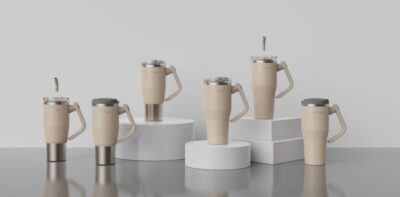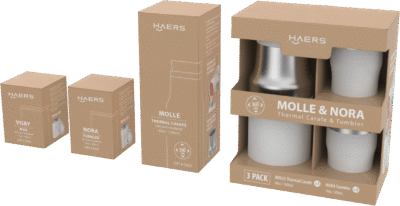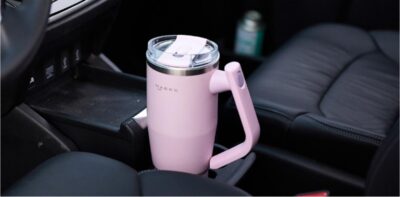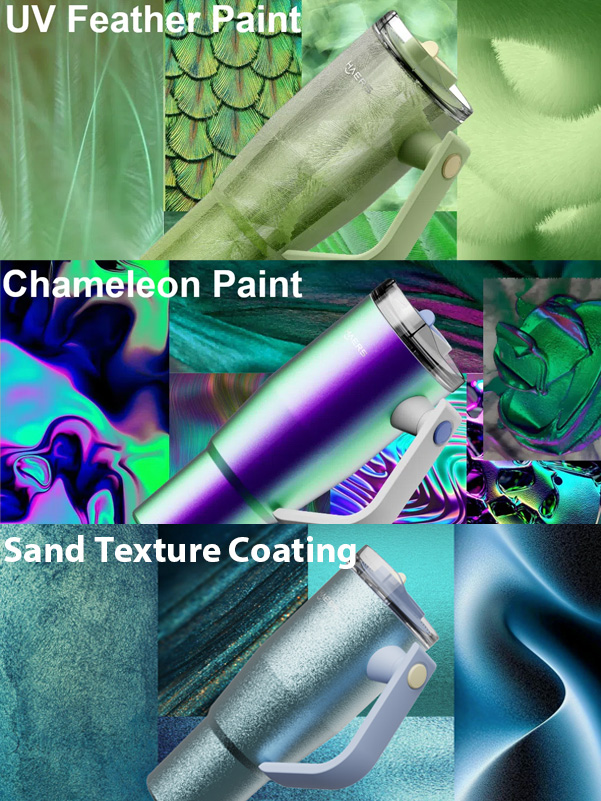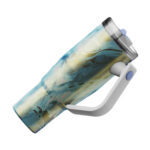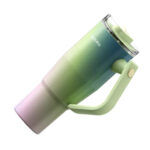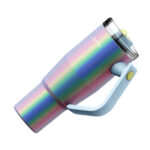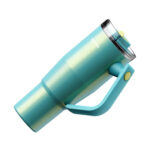How Are Those Weirdly Shaped Cups Made?
Ever strolled through the aisles of a supermarket and found yourself staring at a stainless steel cup that looks like it belongs in a sci-fi movie? Maybe it had a twisted body like a spiral, or a diamond-cut surface that shimmered in the light, or even a wavy contour that made it look like it was melting. These aren’t your average drinkware designs—they’re bold, eye-catching, and sometimes downright strange.
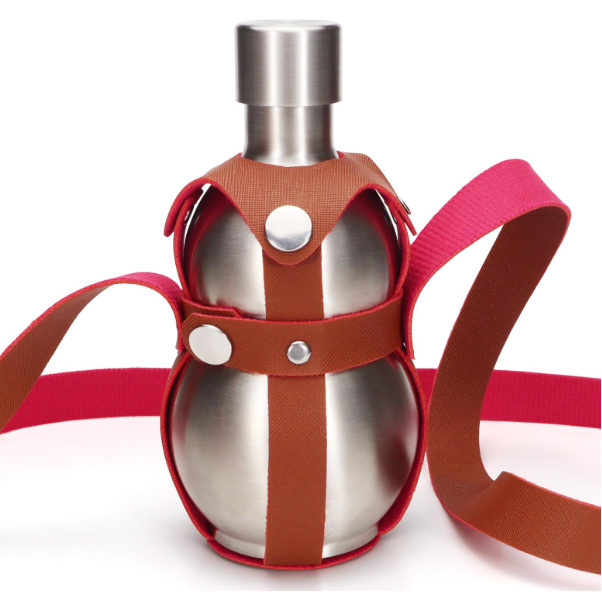
But have you ever wondered how these cups are actually made? Are they hammered into shape one by one, like some kind of ancient blacksmithing ritual?
Table of Contents
ToggleSo, what’s the secret?
One key technique behind these unusual shapes is something called partial stamping.
Partial stamping is a specialized metalworking process that focuses on shaping only specific areas of a material—usually sheet metal like stainless steel. Instead of pressing or forming the entire surface, this method applies controlled pressure to targeted regions using custom-designed molds, causing the metal to deform plastically and take on new shapes only in those chosen spots.
Here’s how it works: When pressure is applied through a mold and exceeds the metal’s yield strength, the material in that area permanently reshapes to match the mold. The rest of the surface remains unchanged. This allows for intricate design elements—like raised patterns, embossed logos, flared edges, or geometric textures—to be added with high precision.
Partial stamping is typically carried out using a press machine, which delivers force via mechanical, hydraulic, or pneumatic systems. The mold itself consists of two parts: the upper die, attached to the moving part of the press, and the lower die, fixed on the base. A metal sheet is placed between them, and when the press activates, the upper die closes onto the lower die, pressing into the selected area.
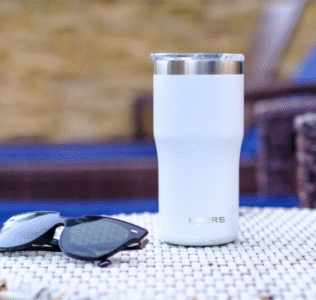
By adjusting the mold design, pressure intensity, and timing, manufacturers can achieve a wide range of localized effects. For example, if we want to add a raised logo on the side of a cup, we simply design a mold with that exact logo shape and press only that area—leaving the rest of the cup smooth and untouched.
That’s how these creative and unusual cup designs come to life—one detail at a time.
How Is Partial Stamping Applied to the Surface of Cups and Bottles?
Partial stamping focuses on shaping only specific areas on the surface of cups and bottles, without altering the entire surface. By pressing a mold onto targeted spots, the material undergoes plastic deformation, creating the desired local design or structure. When applied to drinkware surfaces, the key lies in precision processing of particular areas. Here are some common uses and effects:
Brand Logos
Partial stamping can add raised or recessed brand logos and text to precise locations—like the side of a cup or the top of a lid. The mold is designed exactly to the logo’s shape, pressing only the relevant area. If the mold is concave, the logo will appear raised after stamping; if convex, the logo will be recessed. This method creates a clear texture difference between the logo and the surrounding surface, making the branding both visually distinct and more durable against wear and tear.
Localized Patterns and Decorations
This technique is also used to emboss decorative patterns on limited areas of the cup or bottle surface. For example, a custom floral or geometric design can be stamped onto the middle section of the body, while the rest of the surface remains smooth and untouched. These raised or indented patterns add a tactile dimension that enhances both the look and feel of the product, giving it a richer, more sophisticated appearance.
Functional Structures
Beyond aesthetics, partial stamping can create functional features on specific spots. For instance, a slightly bulged area at the bottom can improve stability, while anti-slip textures—such as continuous raised ridges—can be stamped onto grip zones to increase friction. Although primarily functional, these stamped areas also alter the cup’s surface appearance, adding a structured texture that combines practicality with design.
In all these applications, partial stamping zeroes in on targeted areas, crafting raised or recessed textures that meet both design and functional needs without affecting the overall shape of the cup or bottle.
When Is Partial Stamping the Right Choice?
Partial stamping stands out in situations where customization, quality, and functionality are key—especially with the growing popularity of personalized drinkware.
Personalized Customization Bottles
As demand rises for personalized bulk bottles, partial stamping offers an efficient way to add unique designs, logos, or text directly onto the surface. Whether it’s a corporate gift with a company logo or a commemorative item for special occasions, this technique helps brands deliver individuality and elevate product value in bulk personalized tumblers and cups.
Premium and High-End Brands
For brands that prioritize image and craftsmanship, partial stamping enhances products with refined details—like embossed logos or delicate patterns—that communicate quality and sophistication. These subtle yet impactful touches make premium drinkware stand out, appealing to consumers looking for both style and substance.
Functional Smart Bottles
Beyond decoration, partial stamping improves functionality by reinforcing key areas—such as strengthening the base of insulated bottles for better stability or adding textured grips on handles to prevent slipping. This precise shaping boosts usability without compromising the overall design, making it ideal for versatile drinkware used daily.
So next time you spot one of those oddly shaped cups or bottles—whether it’s a personalized bottle sporting a sleek embossed logo, a bulk personalized cup decked out for a special event, or a personalized bulk tumbler with eye-catching textures—you’ll know there’s more than a little magic behind the scenes. Partial stamping might sound technical, but it’s really the crafty secret that turns plain metal sheets into unique, functional, and downright cool drinkware. It’s how creativity meets precision, helping brands bring personalized designs to life in ways that make every sip feel special. Who knew a little local pressure could make such a big impression?


